
Comments: No Comments
Food Traceability: Final Rule
On November 7, 2022, the Food and Drug Administration (FDA) submitted the Food Safety Modernization Act (FSMA) Final Rule: Requirements for Additional Traceability Records for Certain Foods (Food Traceability Rule) to be published in the Federal Register. The Rule is scheduled to be published November 21, 2022, and will become effective 60 days after. The compliance date for all entities subject to the updated recordkeeping requirements is two years later—January 21, 2025.
Food traceability is the ability to track any food through all stages of the supply chain—production, processing, distribution—to ensure food safety and operational efficiency. Improving food traceability is a key objective for the FDA. The Administration has taken a number of actions over the past few years to put food traceability in the forefront, including establishing Tech-Enabled Traceability as a core element in the FDA’s New Era of Smarter Food Safety Blueprint and now, publishing the final Food Traceability Rule.
Summary of Key Elements
While FDA has had food traceability requirements, the new rule under FSMA Section 204(d) is intended to enhance traceability recordkeeping for certain identified foods beyond a limited “one-up, one-back” traceback approach. The objective of the rule is to “help the FDA rapidly and effectively identify recipients of those foods to prevent or mitigate foodborne illness outbreaks and address credible threats of serious adverse health consequences or death.”
Key elements of the proposed Food Traceability Rule include the following:
- Food Traceability List (FTL): The FTL designates categories of high-risk foods that require additional recordkeeping to protect public health. The Agency created a risk-ranking model to identify the following high-risk foods for inclusion on the FTL: cheeses, shell eggs, nut butter, cucumbers, fresh herbs, leafy greens, melons, peppers, sprouts, tomatoes, tropical tree fruits, fruits and vegetables (fresh cut), finfish, crustaceans, mollusks/bivalves, and ready-to-eat (RTE) deli salads. The rule establishes a process for FDA to update the FTL, as appropriate. Additions become effective one year after publication in the Federal Register; deletions would become effective immediately.
- Critical Tracking Events (CTEs) and Key Data Elements (KDEs): The rule requires tracking KDEs for five defined CTEs: growing, receiving, creating, transforming, and shipping. At each CTE, the responsible entity needs to record the traceability lot code and relevant KDEs specific to that activity. The traceability lot code is to be established by entities that originate, transform, or create food on the FTL. This identifier remains the same as the product moves through the supply chain unless a transformation of the food occurs. The objective is to create linkages throughout the supply chain to help the FDA address key points in the supply chain more quickly in the event of an outbreak.
- Traceability Program Records: Any entity that engages in production of a food on the FTL must create and maintain traceability program records, including a description of relevant reference records, list of foods on the FTL that are shipped, description of how traceability lot codes are assigned, and any other information needed to understand data. Records must be maintained as either original paper records, electronic records, or true copies. An electronic sortable spreadsheet must be provided to FDA within 24 hours during an outbreak, recall, or other threat to public health.
The final rule maintains several exemptions and partial exemptions included in the proposed rule. Some of these include excluding produce that is rarely consumed raw (RCR), certain farms and small originators, farms that sell directly to consumers, certain food produced and packaged on farms, small retail food establishments (RFEs), and others.
Meeting the Needs: Document Management
Over the next two years, those who manufacture, process, pack, or hold foods on the FTL will need to develop and implement the management systems required to fulfill the Food Traceability Rule’s recordkeeping requirements. And while these requirements only apply to foods on the FTL, FDA states that “they were designed to be suitable for FDA food products” and encourages the voluntary adoption of these practices industry-wide.
Having a good document/records management system is essential for maintaining the vast number of documents required by regulations and standards such as the Food Traceability Rule. Companies have been keeping records and documents in binders and file cabinets for years. While that system can work, many dynamic tools are available to alleviate some of these challenges and support organizational decision-making. A document management system can help create:
- Process and document standardization
- Central and secure storage, organization, and access to documents and records locally or remotely
- Improved document searchability and accessibility
- Enhanced workflows for approving and completing tasks involving documents
- Easy access to documents for audits and clear audit trail, particularly for remote audits
- Version control and history
- Reduced paperwork
- Higher quality data due to reduced human error
- Improved collaboration
- Improved security of sensitive documents
All of which lead to consistent, efficient, and reliable compliance performance which, in the case of food traceability, will help to:
- Create standardization and harmonization across industry approaches.
- Reduce response time in a foodborne illness outbreak and, subsequently, the number of people impacted.
- Limit the overall scope of recalls.
- Improve communication and create stronger linkages through greater transparency throughout the supply chain.
- Eventually create end-to-end traceability.

Comments: No Comments
Recent Advances in Environmental Justice
“Far too many of our most disadvantaged Americans continue to live in communities where clean water clean air, and a healthy environment aren’t a reality.” ~ Senator Tom Carper, Chair of Senate Committee on Environment and Public Works (DE).
Environmental justice (EJ) seeks to provide “fair treatment and meaningful involvement of all people regardless of race, color, national origin, or income, with respect to the development, implementation, and enforcement of environmental laws, regulations, and policies” (U.S. Environmental Protection Agency – EPA).
Almost immediately upon taking office, the Biden-Harris Administration took swift and significant action to promote EJ efforts. Executive Order (EO) 13990 Protecting Public Health and the Environment and Restoring Science to Tackle the Climate Crisis and EO 14008 Tackling the Climate Crisis at Home and Abroad both direct federal agencies to develop EJ strategies to address the disproportionately high and adverse human health or environmental impacts of their programs on minority and/or low-income populations. The Justice40 Initiative has made it a goal that 40 percent of the overall benefits of certain federal investments are funneled to disadvantaged communities overburdened by pollution. And EPA’s FY 2022-2026 Plan added a fourth principal to support Biden’s Justice40 initiative—advance justice and equity—and states that “EJ and civil rights will be embedded into EPA’s programs, policies, and activities to reduce disparities in environmental and public health conditions.”
Growing Momentum
The focus on EJ continues to gain momentum with a slew of additional significant actions taken recently to further elevate EJ priorities and deliver on the Administration’s promises to advance justice and equity.
Inflation Reduction Act
On August 12, 2022, the Inflation Reduction Act (IRA) of 2022 passed. The IRA grants funding to EPA to help accelerate EJ efforts in the following areas.
| Area | Funds | Action/Objective |
| Greenhouse Gas (GHG) Reduction Fund | $27 billion | Provide financing to support GHG reduction projects in low-income and disadvantaged communities. |
| Environmental and Climate Justice Block Grants | $3 billion | Empower community efforts and advance EJ projects (e.g., community-led air pollution monitoring, prevention, and remediation; mitigating climate and health risks from extreme heat and wildfires; climate resiliency and adaptation; and reducing indoor air pollution). |
| Protecting Children | $50 million | Provide grants and technical assistance to schools serving low-income communities to address environmental issues, develop school environmental quality plans, mitigate air pollution hazards, and improve health and safety for students and staff. |
| Clean Ports | $3 billion | Provide funding for zero-emission port equipment/technology and to help ports develop climate action plans. |
| Superfund Petroleum Tax | $11.7 billion | Reinstate the Superfund petroleum tax to help ensure polluters are held accountable for the true cost of cleanup work. |
| Enforcement Technology | $25 million | Hold polluters accountable by improving enforcement technology; target enforcement on several of the nation’s environmental laws (e.g., Clean Water Act (CWA), Clean Air Act (CAA), Resource Conservation and Recovery Act (RCRA)). |
| Cleaner Emissions from Trucks and Heavy-Duty Vehicles | $1 billion | Support a zero-emission vehicle infrastructure. |
New EPA Office of Environmental Justice and External Civil Rights
On September 24, 2022, EPA announced a new national Office of Environmental Justice and External Civil Rights to help elevate EJ to the highest levels of government. According to EPA, this office will commit more than 200 staff in EPA headquarters and across 10 regions to help solve environmental challenges in underserved communities. The intent of this office is to:
- Improve EPA’s ability to incorporate equity, civil rights, and EJ principles and priorities into all EPA practices, policies, and programs.
- Support the fair treatment and meaningful involvement of all people in development, implementation, and enforcement of environmental laws, regulations, and policies.
- Engage communities with EJ concerns and increase support for community-led action through grants and technical assistance.
- Enforce federal civil rights laws that prohibit discrimination based on race, color, or national origin; sex; disability; or age by applicants for and recipients of EPA federal financial assistance.
- Provide services and expertise in alternative dispute resolution, environmental conflict resolution, consensus building, and collaborative problem solving.
The new office will ensure that implementation of the IRA’s funding programs meet the Justice40 Initiative. Office staff will also work with the Office of Land and Emergency Management to equitably carry out EPA’s final EJ Action Plan (see below).
Environmental Justice Action Plan for Land Protection and Cleanup Programs
September 30, 2022, EPA announced its finalized EJ Action Plan: Building Up Environmental Justice in EPA’s Land Protection and Cleanup Programs (EJ Action Plan). The plan outlines projects, tools, and practices to be applied to the Superfund, Brownfields, Emergency Response, Solid Waste Management, RCRA Corrective Action, and Underground Storage Tank (UST) programs to improve the quality of cleanups in communities with EJ concerns.
The EJ Action Plan is supported by Bipartisan Infrastructure Law investments, including $1 billion to initiate cleanup of 49 previously underfunded Superfund sites and accelerate cleanup at dozens of other sites.
EPA states four main goals for the EJ Action Plan:
- Strengthen compliance with cornerstone environmental statutes by developing a “Good Governance” process and referral list to help address communities’ ongoing environmental concerns.
- Incorporate EJ considerations during the regulatory development process by assessing impacts to pollution-burdened, underserved, and tribal communities when developing regulations and tools to identify, track, and consider the implications of EJ-related factors throughout the Superfund process.
- Improve community engagement in rulemakings, permitting decisions, and policies by providing earlier and more frequent engagement with pollution-burdened and underserved communities and increasing technical support and risk communication resources.
- Implement President Biden’s Justice40 Initiative through grant application resources and grant award decisions.
Improved Environmental Management
With EPA focused on more regulations, more enforcement, and improved climate change and EJ, environmental management needs to play an integral role in company strategy. Companies must take the time to be informed, be prepared, and be proactive. Establish companywide priorities and goals and commit the appropriate resources to ensure programs and systems are in place to achieve regulatory compliance and align with EPA’s priorities for the future.
If you would like help evaluating your current risk level and assessing your priorities, please contact KTL.

Comments: No Comments
OSHA Strengthens Severe Violator Enforcement Program
The Occupational Safety and Health Administration (OSHA) is stepping up enforcement. On September 16, 2022, the U.S. Department of Labor (DOL) announced expanded criteria for placement in the OSHA Severe Violator Enforcement Program (SVEP) to strengthen enforcement, improve compliance with workplace safety standards (i.e., OSH Act), and reduce worker injuries and illnesses.
SVEP: Then and Now
The expanded criteria build off the original SVEP, which was first introduced on June 18, 2010, to focus OSHA’s resources on inspecting employers who continually expose workers to very serious dangers, even after being cited for them. This includes employers who have demonstrated indifference to OSH Act obligations by either “willfully or repeatedly violating federal health and safety laws or demonstrating refusal to correct previous violations” (i.e., failure to abate).
The changes enacted by OSHA in September 2022 are intended to broaden the SVEP’s scope and maximize the tools available to ensure employers comply with their legal obligation to provide safe and healthful workplaces. The new instructions “reflect the Biden-Harris administration’s commitment to ensuring OSHA has the tools it needs to ensure employers protect their workers or hold them accountable when they fail to provide safe and healthy workplaces,” explains Doug Parker, Assistant Secretary of Labor for Occupational Safety and Health. He reinforces, “These changes to SVEP will hold a microscope to those employers who continue to expose workers to very serious dangers.”
This goes hand-in-hand with the Biden Administration’s recent efforts to make significant improvements in workplace safety protection for American workers through proposed increases in funding and significant increases to OSHA’s maximum penalties, as proposed in the original Build Back Better Act.
What’s Changing
The table below outlines how the SVEP criteria are changing from 2010 to 2022.
| THEN: SVEP 2010 | NOW: SVEP 2022 |
| Limited to cases involving fatalities, three or more hospitalizations, high-emphasis hazards, the potential release of a highly hazardous chemical (PSM), and enforcement actions classified as egregious. | Expands program criteria to include all hazards and OSHA standards, broadening the program’s scope and potential for additional industries to fall within its parameters. |
| Focused on cases where there was a willful or repeated serious violation or a hazard the employer failed to abate that was directly related to either an employee death or an incident that caused three or more hospitalizations. | Focuses on program placement for employers with citations for at least two willful or repeated violations or who receive failure-to-abate notices based on the significance of serious violations. |
| Required no designated timeframe in which OSHA would conduct a follow-up inspection after the final order. | Requires follow-up or referral inspections to be conducted one year (but no longer than two years) after the final order. |
| Permitted removal from the SVEP three years after the final order date. | Allows for potential removal from the SVEP three years after the date of receiving verification that the employer has: · Abated all SVEP-related hazards. · Paid all final penalties. · Where applicable, followed and completed all applicable settlement provisions. · Received no additional serious citations related to the hazards identified in the original SVEP inspection or any related establishments. · Received one follow-up or referral OSHA inspection. |
| Only allowed employers to become eligible for removal from SVEP after three years. | Enables employers to reduce time spent in the SVEP to two years if they consent to an enhanced settlement agreement that includes use of a safety and health management system (SHMS). |
The final two updates included in the table above are intended to incentivize employers to fix problems quickly with solutions that ultimately work to transform the health and safety culture. The new SVEP instructions also add sample documents and guidance for specific situations to assist companies in complying.
Implementing a SHMS
Developing and implementing an SHMS is one of the best ways to help ensure a company does not end up in the SVEP. As stated in the table above, it is also a requirement for early removal from the SVEP. That is because a properly structured SHMS will get the processes, programs, and systems in place—and documented—to ensure the company is protecting employee safety and health and meeting OSH Act requirements.
OSHA requires the SHMS include the following Core Elements of the Safety and Health Program Recommended Practices:
- Management Leadership: Top management demonstrates a commitment to continuous improvement in safety and health, communicates that commitment to workers, provides adequate resources and support, and sets program expectations and responsibilities.
- Worker Participation: Workers understand their responsibilities and are involved in all aspects of the safety and health program, including setting goals, identifying reporting hazards, investigating incidents, communicating with management, and tracking progress.
- Hazard Identification and Assessment: Procedures are in place to continually identify workplace hazards and evaluate risks. Initial assessment of existing hazards, exposures, and control measures is followed by periodic inspections to identify new hazards; any incidents are also investigated to identify root causes.
- Hazard Prevention and Control: Employer and employees cooperate to identify and select methods for eliminating, preventing, or controlling workplace hazards according to the hierarchy of controls: engineering solutions, safe work practices, administrative controls, and personal protective equipment (PPE).
- Education and Training: Workers are trained to understand how the safety and health program works, how to recognize workplace hazards, and how to carry out their responsibilities under the program.
- Program Evaluation and Improvement: Processes are established to evaluate control measures for effectiveness, monitor program performance, verify program implementation, and identify opportunities to improve overall health and safety performance.
- Communication and Coordination for Host Employers, Contractors, and Staffing Agencies: Hosts commit to providing the same level of health and safety protection to all employees, communicating hazards present at the worksite, and resolving any conflicts that could impact safety or health.
Based on the plan-do-check-act cycle of continuous improvement, the SHMS should also include provisions for continually evaluating and improving program effectiveness and for OSHA’s review and evaluation. Finally, implementation must be verified by an independent third party (CSP, CIH, national union safety and health representative) subject to OSHA’s approval.
As usual, the best way to get ready for the increased enforcement is to understand the regulations and be prepared.
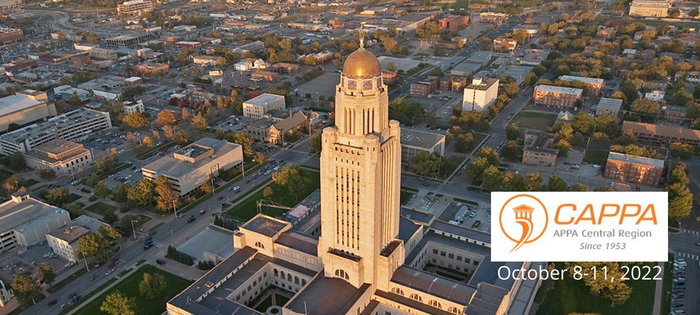
2022 CAPPA Conference: KTL Case Study on Managing EHS Compliance
The Central region of APPA (CAPPA) is back hosting the 2022 Annual Conference in Lincoln, Nebraska this October–and KTL is looking forward to being part of the technical agenda this year! With the constant state of change in Higher Education, every interaction with students, faculty, staff and our business partners, vendor, etc. is important to improvement and growth in facilities. This year’s conference is filled with business and educational sessions to help support facilities management professionals in educational institutions.
KTL will be joining Southeast Missouri State University’s Autumn Gentry to present the following case study:
Using Microsoft 365 and SharePoint® to Manage EHS Compliance: University Case Study
October 10, 2022 | 11:00-11:55 a.m.
This presentation will discuss how educational facilities can use Microsoft 365 and SharePoint as a tool to manage EHS compliance programs. We will provide an overview of applicable EHS regulations, discuss how 365/SharePoint can be used to address university-specific needs, and provide a demonstration of Southeast Missouri State University’s “live” EHS management system.

Comments: No Comments
Progress on PFAS
On October 18, 2021, the Environmental Protection Agency (EPA) announced its comprehensive Strategic Roadmap to tackle per- and polyfluoroalkyl substances (PFAS) contamination. The roadmap focuses on increasing investments in research, leveraging authorities to act now to restrict PFAS chemicals from being released, and accelerating cleanup of PFAS contamination.
Under this roadmap, more and more facilities are starting to be directly impacted by mitigation efforts and pending regulatory action. Just recently, EPA took the following actions to protect individuals and communities from the health risks posed by these “forever chemicals”.
Proposed Hazardous Substances Under Superfund
On August 26, 2022, EPA has issued a proposal to seek public comment on designating two of the most widely used PFAS as hazardous substances under the Comprehensive Environmental Response, Compensation, and Liability Act (CERCLA, aka Superfund). This proposal applies to perfluorooctanoic acid (PFOA) and perfluorooctanesulfonic acid (PFOS), including salts and structural isomers.
Like other PFAS, PFOA and PFOS can accumulate and persist in the human body for long periods of time. The intent of this rulemaking is twofold:
- Increase transparency around releases of PFOA and PFOS; and
- Help hold polluters accountable for cleaning up their contamination.
If finalized, the rulemaking would trigger reporting of PFOA and PFOS releases, providing the EPA with improved data and the option to require cleanups/recover cleanup costs. According to EPA, a release of PFOA, PFOS, or any other hazardous substance does not always add a site to the National Priorities List (NPL), necessitate cleanup, or result in an enforcement action.
EPA suggests this potential rulemaking would:
- Improve EPA, state, Tribal nation, and local community understanding of the extent and locations of PFOA and PFOS contamination throughout the country.
- Help communities avoid or reduce contact with these potentially dangerous chemicals.
- Encourage better waste management and treatment practices by facilities handling PFOA or PFOS.
- Potentially accelerate privately financed cleanups and mitigate potential adverse impacts.
- Allow EPA to recover cleanup costs from a potentially response party or require such a party to conduct the cleanup.
- Better protect public health.
EPA anticipates issuing an Advance Notice of Proposed Rulemaking in the next several weeks and will seek public comment once that is published.
Removal from Pesticide Products
On September 1, 2022, EPA proposed to remove 12 chemicals identified as PFAS from the current list of inert ingredients approved for use in pesticide products. Unlike active ingredients, inert ingredients are used to enhance pesticide effectiveness and product performance (e.g., extend shelf life, improve ease of application). EPA reviews safety information for inert ingredients before they can be included in a pesticide.
While these 12 PFAS are no longer used in any registered pesticides, EPA decided to remove the chemicals from the list of approved inert ingredients to prevent any further requested use in pesticide products.
EPA continues to evaluate pesticide active ingredients to determine if any meet the definition of PFAS or create other concerns.
Study on Leaching
In a recent study released on September 8, 2022, EPA confirmed that plastic containers made of fluorinated high-density polyethylene (HDPE) are likely to leach PFAS substances into pesticides and other liquid products that are stored in them. The data shows that the amount of PFAS that migrates into liquid products increases with storage time. This study further demonstrates the persistent and cumulative nature of PFAS.
Ongoing Challenges
KTL does not see the challenges associated with PFAS going away any time soon. If anything, we anticipate more facilities will be directly impacted by mitigation efforts and regulatory action to support the Strategic Roadmap, such as those outlined above. Proper usage strategies, a comprehensive environmental management system (EMS), and a forward-thinking Emergency Response Plan will remain vital tools for companies potentially dealing with PFAS to effectively manage the associated risks.
If you are facing challenges related to PFAS or would just like a fresh set of eyes to evaluate your current environmental risk level, please contact KTL. Our staff has hands-on experience assessing environmental risks and developing strategies to minimize them to the extent possible. Our team writes Emergency Response Plans and routinely works with Local Emergency Planning Committees (LEPCs) to coordinate emergency response efforts and exercises to keep communities informed and safe. In addition, we have a strong network of partners that can assist with testing and remediation strategies, when necessary.
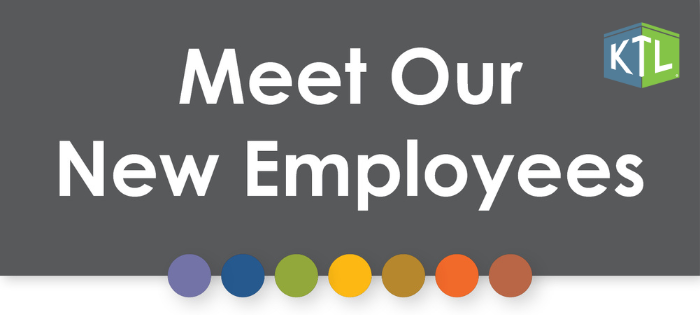
KTL Expands EHS Resources
KTL is pleased to welcome the newest member of our EHS team!

Coulter Wood, CEM, CPEA, Senior Consultant
Coulter Wood, CEM, CPEA, is an is an environmental compliance and energy management leader with over 20 years of industry and consulting experience in providing expert regulatory and technical guidance, conducting energy and environmental compliance audits, leading corporate sustainability efforts and environmental capital expenditure projects, and managing energy sourcing and procurement. Coulter has extensive knowledge of state and federal environmental regulations. He has completed inspections and reports for emissions stack testing and Title V permitting, air emissions inventories, hazardous waste generation, storm water sampling, SPCC Plans, and NPDES authorizations and permits. He has also developed environmental and energy management systems. Coulter is a Certified Environmental Manager (CEM) and Certified Professional Environmental Auditor (CPEA). Coulter is based in Des Moines, Iowa. Read his full bio…
cwood@goktl.com | 507.208.9126
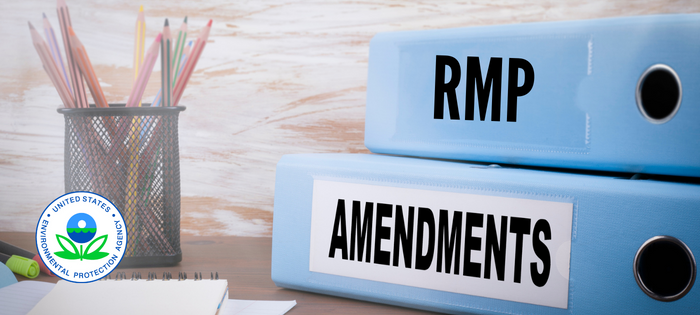
Comments: No Comments
Safer Communities by Chemical Accident Prevention Proposed Rule
The Environmental Protection Agency’s (EPA) Risk Management Program (RMP) Rule is no stranger to change and controversy. Just what the RMP rule entails has been the subject of debate since EPA published the first RMP Amendments in January 2017. Since that time, rules related to RMP requirements have been published, petitioned, delayed, vacated, reissued, and reconsidered.
As the most recent action in the ongoing RMP saga, EPA proposed on August 31, 2022 to strengthen the RMP regulations with the Safer Communities by Chemical Accident Prevention (SCCAP) proposed rule.
RMP Background
RMP was promulgated in 1996 under the Clean Air Act (CAA) Section 112(r)(7) in 40 CFR Part 68. The goal of the RMP program is to prevent accidental releases of toxic substances that can cause serious harm to the public. To do this, the program requires subject facilities to develop and implement an RMP for their specific operations that:
- Identifies the potential effects of a chemical accident.
- Identifies steps the facility is taking to prevent an accident.
- Spells out emergency response procedures should an accident occur.
RMP covers 140 regulated toxic or flammable substances at approximately 11,740 facilities nationwide, including agricultural supply distributors, waste/wastewater treatment facilities, chemical manufacturers and distributors, food and beverage manufacturers, chemical warehouses, oil refineries, and other chemical facilities. One area of industry that is highly impacted but frequently overlooked is facilities with ammonia refrigeration units that hold more than 10,000 lbs. of ammonia. This has become a focus for much recent EPA enforcement.
Proposed Amendments
The proposed SCCAP amendments include a number of requirements that were originally promulgated by the Obama Administration EPA in 2017 and subsequently rescinded during the Trump Administration in 2019, plus several new requirements considering impacts of climate change, environmental justice concerns, employee participation, and enhanced community notification.
| Subpart | Area | Proposed Rulemaking |
|---|---|---|
| Prevention Program (Subparts C & D) | Natural Hazards & Power Loss | Natural hazards (including those from climate change) and loss of power must be addressed in Program 2 hazard reviews and Program 3 process hazard analyses (PHAs). Justification is required in the Risk Management Plan when hazard evaluation recommendations are not adopted. |
| Prevention Program (Subparts C & D) | Facility Siting | Facility siting should be addressed in hazard reviews and explicitly define the facility siting requirement for Program 2 hazard reviews and Program 3 PHAs. Justification is required in the Plan when facility siting hazard recommendations are not adopted. |
| Prevention Program (Subparts C & D) | Safer Technologies & Alternatives Analysis (STAA) | Considerations for STAA and practicability of inherently safer technologies and designs are required for a) RMP-regulated processes under NAICS code 324 and 325 within one mile of another RMP facility under NAICS code 324 or 325; b) RMP-regulated hydrofluoric acid alkylation processes classified under NAICS code 324. Justification is required in the Plan when STAA recommendations are not adopted. |
| Prevention Program (Subparts C & D) | Root Cause Analysis | A formal root cause analysis incident investigation is required when facilities have an RMP-reportable accident. |
| Prevention Program (Subparts C & D) | Third-Party Compliance Audits | The next scheduled compliance audit must be conducted by a third party when an RMP-regulated facility experiences a) two RMP-reportable accidents within five years; or b) one RMP-reportable accident within five years by a facility with a Program 3 process under NAICS code 324 or 325 within one mile of another RMP facility under NAICS code 324 or 325. Justification is required in the Plan when third-party compliance audit recommendations are not adopted. |
| Prevention Program (Subparts C & D) | Employee Participation | Employee participation is required in resolving PHAs, compliance audits, and incident investigation recommendations and findings. Stop work procedures must be outlined in Program 3 employee participation plans. Program 2 and 3 employee participation plans must also include opportunities for employees to anonymously report RMP-reportable accidents or other non-compliance issues. |
| Emergency Response (Subpart E) | Community Notification of RMP Accidents | Non-responding RMP facilities are required to develop procedures for informing the public about accidental releases. Release notification data must be provided to local responders, and a community notification system must be in place for RMP-reportable accidents. |
| Emergency Response (Subpart E) | Emergency Response Exercises | Field exercises (with mandatory scope and reporting requirements) must be conducted with a 10-year frequency unless local responders indicate that frequency is infeasible. |
| Information Availability (Subpart H) | Enhanced Information Availability | Facilities must provide chemical hazard information upon request to residents living within six miles of the facility in the language requested. |
| Other Areas of Technical Clarification (Subparts A, C, D) | Minor Regulatory Edits | · Require Program 3 process safety information be kept up to date. · Make Program 2 & 3 requirements consistent for recognized and generally accepted good engineering practices (RAGAGEP). · Retain hot work permits for five years. · Further define “storage incident to transportation” and the retail exemption. · Require RAGAGEP review in PHAs. |
Focus on Environmental Justice
In January 2021, President Biden signed Executive Order (EO) 13990, “Protecting Public Health and the Environment and Restoring Science to Tackle the Climate Crisis”. EO 13990 directs Federal agencies to “immediately review, and take action to address, Federal regulations promulgated and other actions taken during the last four years that conflict with national objectives to improve public health and the environment; ensure access to clean air and water; limit exposure to dangerous chemicals and pesticides; hold polluters accountable, including those who disproportionately harm communities of color and low-income communities; reduce greenhouse gas emissions; bolster resilience to the impacts of climate change; restore and expand our national treasures and monuments; and prioritize both environmental justice and employment.”
The proposed changes to RMP are an outgrowth of EO 13990 and a February 2022 Government Accountability Office (GAO) report recommending EPA amend the RMP rules to ensure that affected facilities are considering the risks associated with climate change.
According to EPA, RMP facility accidents occur more frequently in predominately minority communities. Persons of color make up 50% of those individuals living within one mile of RMP facilities; low-income individuals comprise 42% of those living within one mile of RMP facilities. Many of these communities live near multiple RMP facilities. These populations are particularly at risk of exposure if an accidental release at an RMP facility occurs.
In line with EO 13990, the intent of the SCCAP proposed rule is to further protect vulnerable communities from chemical accidents, especially those living near facilities with high accident rates. Proposed changes would require RMP-regulated facilities to better consider surrounding communities and the consequences of potential chemical accidents.
Deadlines
If finalized, the SCCAP rule will require RMP facilities to update their programs and plans to consider new data elements, prepare additional reports, and implement or update their notification procedures and field exercises to meet new deadlines:
- Three (3) years after effective date of final rule, facilities must implement provisions for:
- New STAA
- Incident investigation root cause analysis
- Third-party compliance audit
- Employee participation
- Emergency response public notification
- Exercise evaluation reports
- Information availability information
- Four (4) years after effective date of final rule, RMP-regulated facilities must update and resubmit their Risk Management Plans with new and revised data elements.
- Facilities must comply with the revised emergency response field exercise frequency provision by March 15, 2027 or within 10 years of the date of an emergency response field exercise conducted between March 15, 2017 and the date of publication.
What’s Next
The SCCAP proposed rule is likely to be as controversial as its predecessors due to its potential impacts on RMP-regulated facilities across industries. Interested parties should take the time to submit comments by October 31, 2022 during the 60-day public comment period.
In the meantime, KTL will continue to follow and provide updates on the SCCAP proposed rule. KTL has experience working with a broad cross-section of industries impacted by RMP, particularly chemical companies. We have created RMP and General Duty Clause audit protocols and conducted audits and investigation/improvement programs following significant release events. In addition, our team provides Tier II and TRI reporting, writes plans for OSHA and Emergency Response, and routinely works with Local Emergency Planning Commissions (LEPCs) to coordinate emergency response efforts and exercises to keep communities informed and safe.
Regulatory enforcement-driven projects such as those related to RMP require skills in regulatory strategy, negotiations, expert analysis, presentations and testimony—and, equally important—trust and relationship building. KTL can work with companies to:
- Identify/understand/prioritize compliance risks
- Outline steps to improve performance and safe operations
- Define organizational roles and responsibilities
- Streamline compliance methods
- Plan and conduct required tabletop exercises and coordinate with local emergency response
- Implement, monitor, and continually improve performance
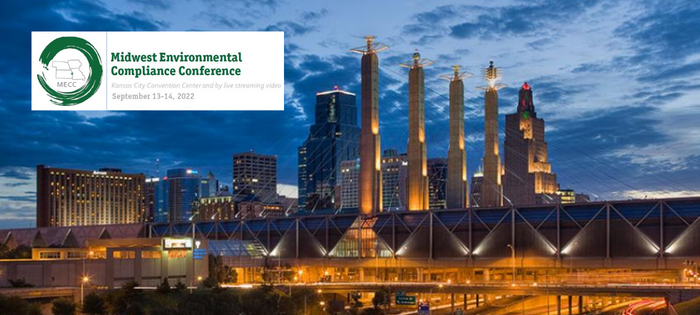
MECC 2022: KTL Presents on Compliance Management Systems
KTL is excited to be joining the 2022 Midwest Environmental Compliance Conference (MECC) as a featured presenter live and in-person in Kansas City, Missouri. MECC examines the new environmental reality under the Biden Administration. The conference takes a fresh, regional approach to the increasingly difficult task of environmental compliance, permitting, enforcement, and other critical environmental issues that impact Midwest facilities and institutions.
KTL’s presentions are part of the workshop’s technical agenda:
City of Lincoln Transportation and Utilities Compliance Management System: A Demonstration
September 13, 2022 | 10:00-10:35 a.m.
See how the City of Lincoln, NE Transportation and Utilities Department is leveraging Microsoft 365® to build regulatory compliance management tools that help track permit requirements and other compliance obligations. Features include requirements database, workflows with email notifications, status tracking, document and records management, staff communication / collaboration tools, and management reporting.
EHS Information Management System using Microsoft 365 and SharePoint
September 13, 2022 | 3:40-4:15 p.m.
Effective information management is critical to complying with EHS regulations, but many organizations lack the resources to manage, maintain, and demonstrate compliance. This presentation will demonstrate how Microsoft 365® and SharePoint® can be used as tools to create organizational efficiency and meet regulatory compliance obligations. KTL and Southeast Missouri State University will share the university’s SharePoint site and demonstrate how they are using the system to effectively manage EHS programs, including chemical management, air quality, and refrigerant management. This session will walk through features of SharePoint, provide tips to keep tools remain simple yet effective, and highlight how SharePoint can be expanded into an effective technology platform to ensure ongoing compliance.

Comments: No Comments
BRCGS Issue 9: Focus on Culture and Core Competencies
First published in 1998, the BRCGS Global Food Safety Standard “provides a framework to manage product safety, integrity, legality, and quality, and the operational controls for these criteria in the food and food ingredient manufacturing, processing, and packing industry.” BRCGS was the first standard to be benchmarked by the Global Food Safety Initiative (GFSI) and has been adopted by over 22,000 sites in 130 countries.
Over the past 24 years, the Global Food Safety Standard has been updated regularly to reflect the latest trends in food safety and to encourage more widespread adoption. The latest version—Issue 9—was recently launched on August 1, 2022. According to the Standard, the focus for the most recent issue has been on the following:
- Encouraging understanding and further development of product safety culture.
- Ensuring global applicability, compatibility with the Codex General Principles of Food Hygiene, and benchmarking to the GFSI requirements.
- Expanding audit options to include the use of information and communication technology through a blended option.
- Updating the requirements associated with core product safety activities, such as internal audits, root cause analysis, preventive actions, and incident management.
- Providing greater clarity for sites completing animal primary conversion and producing animal feed.
Of important note, Issue 9 emphasizes two core themes: building core competencies and developing food safety culture.
Core Competencies
According to BRCGS, approximately 30% of nonconformances identified in food safety audits are related to what BRCGS calls “core competencies”. Core competencies are the basic elements and day-to-day activities that form the foundation of any food safety program. As audit results have demonstrated, many food businesses still aren’t getting the basic functions right when it comes to their daily work practices.
At its core, Issue 9 calls for more to be done to reduce nonconformances across the industry. The Standard believes the best way to do that is to improve and optimize the fundamentals (i.e., the core competencies). The requirements the Standard has specifically deemed “fundamental” include the following:
- Senior management commitment and continual improvement (1.1)
- Food safety plan – Hazard Analysis and Critical Control Points (HACCP) (2)
- Internal audits (3.4)
- Management of suppliers of raw materials and packaging (3.5.1)
- Corrective and preventive actions (3.7)
- Traceability (3.9)
- Layout, product flow, and segregation (4.3)
- Housekeeping and hygiene (4.11)
- Management of allergens (5.3)
- Control of operations (6.1)
- Labeling and pack control (6.2)
- Training: raw material handling, preparation, processing, packing, and storage areas (7.1)
Core competencies must not just be established, but they must also receive ongoing attention and improvements to conform with the Global Food Safety Standard. These core competencies are critical to creating a strong food safety culture—the second core theme of Issue 9.
Food Safety Culture
Food safety culture and its introduction into various certification schemes and regulations is a hot trend that continues to grow in importance. Artifacts of product safety culture have actually been included in the BRCGS standard since its inception in 1998, but food safety culture wasn’t added as a specific requirement until Issue 8. Issue 9 takes food safety culture to the next level with the requirement for organizations to put in place defined activities and behaviors—with defined timescales and measurements—to support the improvement of food safety and culture.
In Issue 9, food safety culture is now part of the fundamental section in 1.1 Management Commitment to ensure development and continuous improvement. In addition, sites must have a Food Safety Culture Plan that requires, at a minimum:
- Clear and open communication on product safety
- Training
- Feedback from employees
- Behavior changes required to maintain and improve product safety processes
- Performance measurement on product safety, authenticity, legality, and quality-related activities
Next Steps
Sites currently certified globally to the BRCGS Global Food Safety Standard will have a transition period of six months to prepare their food safety systems to be audited against Issue 9’s requirements. Certification audits will commence February 1, 2023. In addition to the announced audit program (with mandatory unannounced audit every three years) and the unannounced audit program, which both remain largely unchanged since Issue 8, Issue 9 introduces a blended announced audit option that comprises a remote audit focused primarily on documented systems and records, followed by an onsite audit to review production, storage, and other onsite areas.
The next six months affords companies the time to assess current BRCGS Food Safety program elements; identify improvements that are internally desirable and required by the new Issue 9; and implement those updates that will create a strong food safety culture, improve core competencies, and reduce nonconformances with the BRCGS Food Safety Standard.
This can be done through a series of phases to ensure adoption throughout the organization.
- Phase 1: BRCGS Food Safety Internal Assessment – Review existing BRCGS food programs, processes, and procedures; document management systems; and employee training tools and programs to identify those need areas in need of updates, development, and/or implementation to meet the requirements of Issue 9.
- Phase 2: BRCGS Food Program Updates – Based on the assessment, develop a plan for updating the BRCGS Food Safety certification program, including major activities, key milestones, and expected outcomes. This may include updating/developing BRCGS Food programs, processes, procedures, and training with missing Issue 9 requirements and incorporating new food safety culture requirements (i.e., Food Safety Culture Plan).
- Phase 3: Training – To ensure staff are prepared to implement and sustain the updated BRCGS Food Safety program, staff must be trained on applicable requirements; specific plans, procedures, and good manufacturing practices (GMPs) developed to achieve compliance; and the certification roadmap to prepare for future assessments.
Following this plan now will help companies ensure they maintain their BRCGS Food Safety certification when assessments begin under Issue 9 in February 2023.
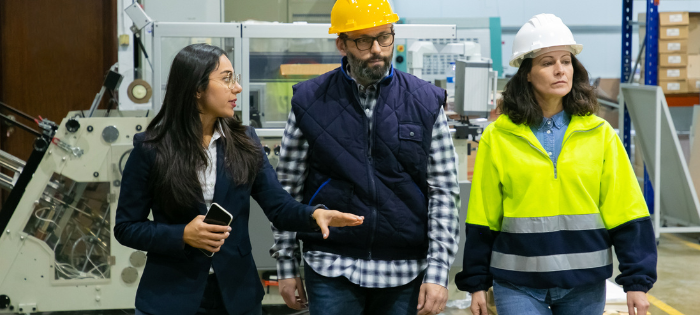
Comments: No Comments
Benefits of a Third-Party Safety Audit
Safe + Sound Week
You have not had any injuries. You have an onsite safety professional. You don’t have any high hazard operations onsite. You have few employees. You mostly use contractors and temporary workers. Whatever your situation, you may think that having a third-party audit of your safety programs and operations is an added expense that provides no real value.
In reality, a third-party safety audit can provide a valuable means of supporting ongoing safety performance and compliance, even beyond what an internal audit might provide. A third-party safety audit has the following advantages:
- Objectivity: Enlisting a qualified outside firm to audit your safety program provides a fresh set of unbiased eyes to assess aspects of your program internal staff may not consider. Third-party auditors offer broad perspective and knowledge of best management practices from conducting audits across industries. They maintain ongoing, up-to-date awareness of current and pending regulatory requirements that the organization should consider.
- Customizable: The audits themselves can be customized to fit the needs and goals of the organization. A third-party auditor can provide more direct coverage to evaluate specific program effectiveness and allow for a more focused understanding of existing strengths and improvement areas. Whether there is a desire to prepare for unannounced regulatory agency visits, review plans and programs, or even verify applicability, third-party audits can be built to suit the organization’s identified concerns and risks.
- Efficiency: Audits performed internally can take resources away from normal business operations. Third-party auditors work with the resources (or lack thereof) allocated to them to conduct an audit in a timely manner that does not negatively impact business functions.
- Validation: Third-party auditors validate existing programs and identify areas where best practices can be implemented to further protect the company. They assist in identifying issues before they become violations and identify root causes of continuing issues—focusing on corrective actions to be implemented. They can also provide data and reports that can be shared internally with employees to improve safety performance or externally with communities or customers to bolster the company’s image.
Every safety program needs to be continually reviewed and assessed to ensure it is meeting organizational goals and compliance requirements. Building a relationship with a third-party auditor is one way for organizations that are committed to a strong safety culture to:
- Take their safety program to the next level.
- Keep employees safe.
- Further protect the organization from a risk and compliance standpoint.
